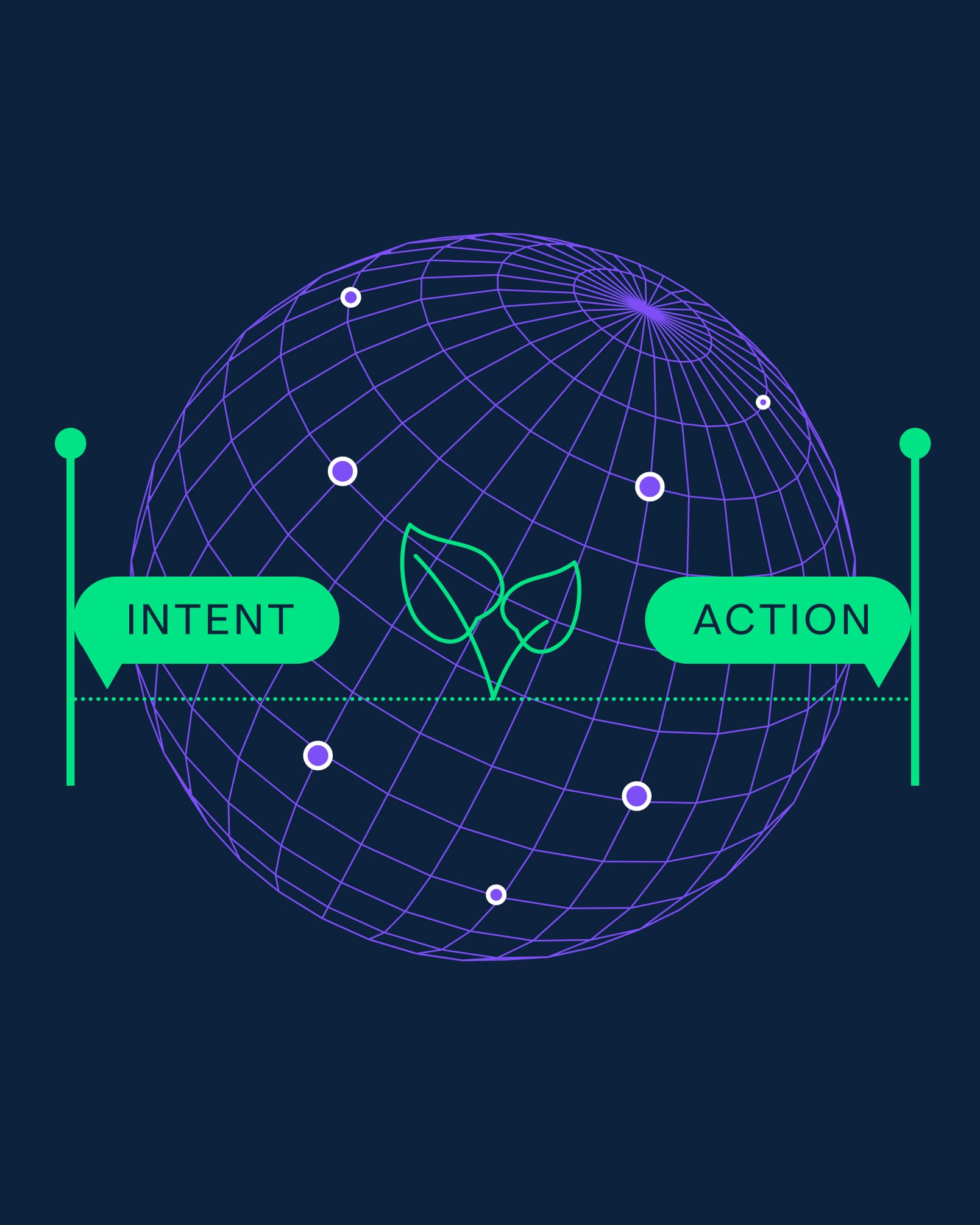
In the everchanging world of ecommerce and digital products, the drive towards faster, cheaper, and more flexible digital solutions often overshadows an inconvenient truth: our digital products are increasingly carbon intensive. And, yes, this was the case long before AI came along and started adding even more emissions within the digital space…
While it may be judicious (and very easy!) to point fingers at traditional sectors like agriculture, utilities, and transport for their sizeable carbon footprints, the Information and Communications Technology (ICT) sector quietly contributes about 3-4% of global emissions. This is a share that seems to continue growing despite universal awareness of climate change being on the rise.
The Hidden Carbon Giant: ICT’s Environmental Impact
Professor Mike Berners-Lee, an expert in carbon footprint analysis, highlights that ICT, while not the largest contributor, is a significant and growing source of emissions. Since 2012, internet user numbers have surged, driving up the energy demands of data centres, networks, and end-user devices. Data centres alone, the backbone of our digital lives, are gluttonous consumers of power and water.
To put this into an everyday perspective, it has been reported that a single Google search produces the equivalent of 7g of carbon, which is the same amount of energy required to boil half a cup of water – this covers the full lifecycle of the search, from indexing through to simply powering the press of the search button.
And in the world of emerging tech, these figures sadly inflate even further. Though it can be argued that AI models that harness the power of large language models (LLM’s) aren’t excessively carbon intensive to build, it is estimated that their outputs – generative AI searches – require 4-5x more carbon than regular searches. On the scale of 13 billions users a day, this paints a dangerous picture for the future of carbon emissions.
The Industry’s Response: Sustainability Commitments from Tech Giants
In the majority of cases, leading tech companies are aware of their environmental impact and have made ambitious pledges to mitigate it. Amazon’s AWS aims for 100% renewable energy by 2025, Google has been carbon-neutral since 2007, and Microsoft plans to be carbon-negative by 2030. These commitments are promising, but the challenge remains vast.
For example, AWS plans to achieve net-zero carbon by 2040, and Google’s 2030 goal includes operating on carbon-free energy 24/7 and replenishing the water it consumes. Microsoft, besides its carbon-negative goal, has pledged to offset all carbon emissions since its founding by 2050.
These efforts are crucial, but the broader ICT industry must follow suit in the adoption of sustainable practices to make their own contribution to the reduction of emissions. The Composable Path: Enabling Greener Digital Products This is where composable technology enters the chat. Composable technology, particularly in the realm of content management systems (CMS) and ecommerce, offers that coveted, greener path forward. By shifting from monolithic applications to modular, headless CMS solutions, businesses can significantly reduce their carbon footprints.
At its core, composable technology decouples the frontend and backend of digital applications, allowing for static site generation (SSG). This approach means that the content is pre-built and served from a content delivery network (CDN), drastically reducing server load and, consequently, energy consumption. Platforms like Vercel’s Next.js facilitate this by generating static sites that are stored in the cloud and served efficiently to users around the globe.
Case Study: UK Power Networks’ Digital Transformation
Consider our work with UK Power Networks. Partnering with Tangent, this utilities provider transitioned from a traditional Sitecore platform to a modern, Umbraco Heartcore and JAMstack solution. This migration not only enhanced performance and scalability but also yielded impressive sustainability gains. The new system slashed the carbon emissions per homepage visit from 1.44g to just 0.22g CO2, a substantial decrease that exceeded expectations and will surely contribute to their ongoing net-zero ambitions.
Outside of the environmental space, this migration also resulted in a 66.61% monthly cost saving and a dramatic improvement in performance, reducing the time to interactive (TTI) from 4.22 seconds to 1.41 seconds. These benefits demonstrate the triple advantage of composable technology: it is cheaper, faster, and greener.
The Broader Impact: Flexibility and Future-Proofing
Beyond sustainability, composable technology offers flexibility and future-proofing that monolithic systems cannot match. It allows businesses to select best-of-breed components and integrate them seamlessly, adapting quickly to new technologies and market demands. This modularity also means that updates and changes can be made without overhauling the entire system, reducing both downtime and resource use.
In summary, as the ecommerce sector grapples with the dual pressures of scaling operations and minimising environmental impact, composable technology provides a compelling solution. By adopting modular, headless CMS platforms and static site generation, businesses can achieve significant cost savings, performance improvements, and carbon reductions. This shift not only aligns with the sustainability commitments of tech giants but also sets a new standard for responsible digital innovation.
The Path Forward
The ICT sector’s share of global emissions might seem modest compared to traditional heavyweights like agriculture and transportation, but its rapid growth trajectory demands urgent attention. By embracing composable technology, the ecommerce industry can play a pivotal role in mitigating climate change, demonstrating that sustainability and technological advancement are not mutually exclusive but are, in fact, synergistic.
At Tangent, we believe that the future of digital products lies in this balance – leveraging cutting-edge technology to create not only efficient and cost-effective solutions but also ones that are kinder to our planet, with or without AI in tow. As we continue to explore and implement these innovations, we are committed to unlocking sustainable systems that serve both our clients and the environment. And we’d love to help you on your journey!
This interview originally shared by Klevu Discovered Magazine and is available here.



















